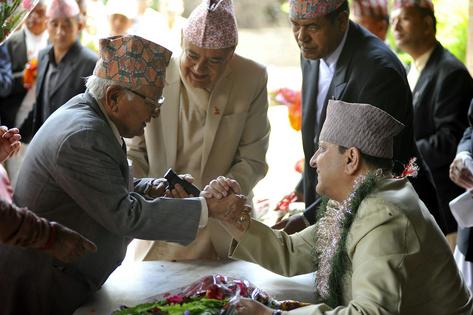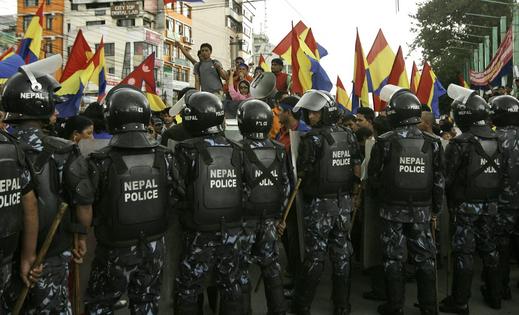Why Nepal had a religious monarchy − and why some people want it back
Published in News & Features
Gyanendra Shah, former king of Nepal, will celebrate his 77th birthday on July 7, 2024. Twenty years ago, his birthday would have been a Nepalese national holiday. Indeed, when I first traveled to Nepal in 2001, the nation prided itself on being the “world’s last Hindu kingdom.” Every rupee note showed the king’s face. The national anthem sang his praise.
But between 2006 and 2008, Nepal transitioned from a Hindu monarchy to a secular democracy. It dissolved its monarchy completely, and Shah left the palace in June 2008. He has been living ever since as a private citizen.
In 2012, when I submitted my doctoral dissertation on the transition, it seemed that Nepal had decisively eliminated its monarchy and that Nepalis were gladly anticipating their secular future. But today many Nepalis are disillusioned with their multiparty democratic system. Following a major pro-monarchy rally in November 2023, Nepal’s capital has witnessed a series of modest but vocal follow-up demonstrations advocating a return to Hindu monarchy.
What had religious kingship looked like in Nepal? Why was it ended – and why do some people want it back?
Unlike European monarchies, which were deeply connected to Christianity, Nepal’s monarchy was rooted in Hinduism. This meant the king of Nepal needed to be born into a Hindu family, and he needed to marry a Hindu woman. He needed to uphold family lineage rituals and worship in his ancestral shrine room. He also needed to have close relationships with Brahmin priests.
The modern palace hired a priestly Brahmin staff – salaried employees who reported daily to a palace office to do rituals. The king needed to honor major Hindu holidays by making public appearances and performing rituals. He surveyed the army on Shiva Ratri, a festival that honors Lord Shiva, and blessed government leaders during the Hindu festival of Vijaya Dasami. He received a blessing from his patron goddess Kumari, a young girl believed to be the manifestation of the Hindu goddess Taleju, during the festival of Indra Jatra.
These roles made the king the patriarch, protector and archetype of the nation. Even though for most of Nepal’s history the king was not directly running the government, in a common royalist phrase, the king was Nepal’s “ekata ka prateek”: the symbol of unity.
Modern Nepal has existed for only about 250 years. For centuries, what is now Nepal was divided among many small principalities. In the 1760s, though, a minor local king conquered all his neighbors, relocated his capital to Kathmandu and set his dynasty on the throne. But after this ambitious and effective king, the descendants who followed were mostly weak and ineffective rulers. By 1800, the country was being governed in the king’s name by regents and self-appointed prime ministers.
In 1950, however, King Tribhuvan Shah, who had been serving a purely ceremonial role since 1922, formed an alliance with a budding democracy movement in order to step into more direct political power. From King Tribhuvan onward, Nepal’s kings would actively lead the government.
The modern monarchy was further centralized and consolidated by Tribhuvan’s son, King Mahendra, who ruled from 1955 to 1972. Urbane and cosmopolitan, he worked to modernize the country and his role as king. Meanwhile, he greatly expanded the idea of Hindu kingship. He also dissolved the country’s first democratically elected government in order to put himself in charge of the panchayat, an ostensibly grassroots democratic system that in reality was tightly controlled by the palace.
...continued











Comments